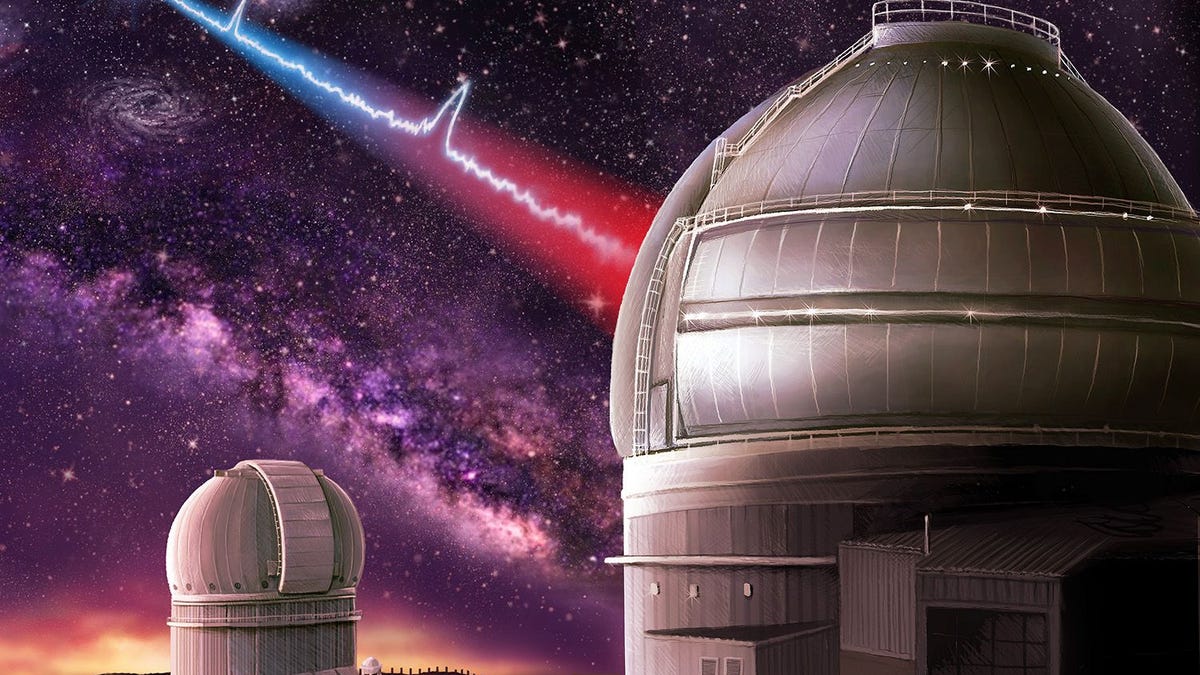A mysterious radio burst from space is back, right on schedule
Roughly every 161 days it starts all over again.

We're already picking up more signals from deep space.
In June this year, astronomers found a fast radio burst (FRB), FRB 121102, repeating in a regular pattern, from somewhere in deep space. It was only the second time a radio burst with a discernible, repeating pattern was discovered. The first was discovered back in February this year.
FRBs are transient radio pulses that vary in length between a fraction of a millisecond and a few milliseconds. We're still not sure why they exist or what they are. The source of this particular FRB is a dwarf galaxy more than 3 billion light years away.
Back in June a study, published in the journal Monthly Notices of the Royal Astronomical Society, theorized FRB 121102 repeated every 157 days based on data they'd accumulated over a five-year period. The team predicted they'd pick up another signal in July or August of this year.
And they did: Right on cue, FRB 121102 kicked off.
A new preprint study has confirmed that FRB 121102 has started up again, and this study confirmed a similar periodicity: 161±5 days. The new data confirms earlier theories FRB 121102 is sending a repeating radio burst; second, it allows scientists to predict its activity and study it more effectively, potentially learning more about its origins.
Could it be aliens? Probably not.
"I think in all likelihood we'll work out a natural explanation for these events, but I like to keep an open mind and follow wherever the evidence leads me," said Adam Deller, an astrophysicist at Swinburne University of Technology.
University of Manchester's Kaustubh Rajwade, who led research in the first study that identified the repeating FRB, thinks it could be a neutron star.
"Based on the short durations and the high luminosities of the bursts themselves, a good guess would be a neutron star with a very high magnetic field that is orbiting a companion object," he said.

